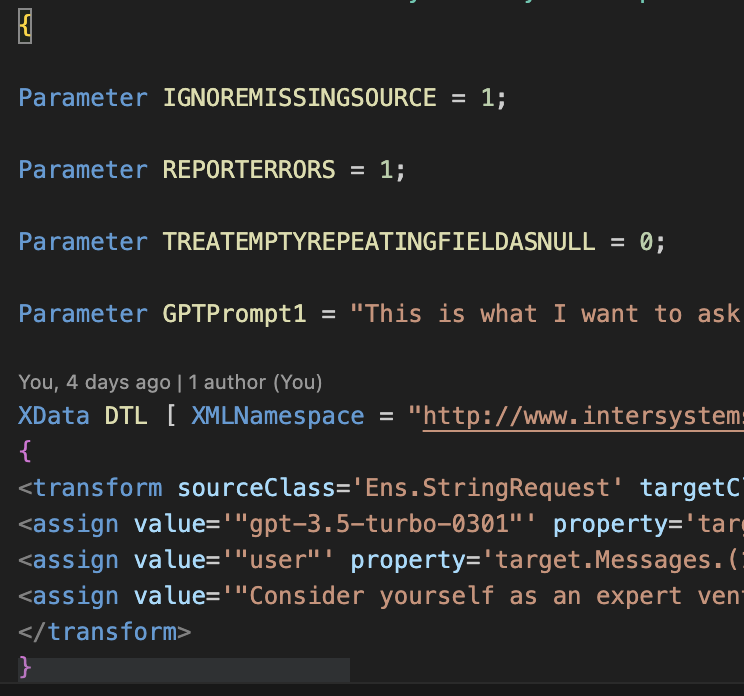Hi, Developers!
I wonder if it is possible to use class parameters in DTL XData?
E.g. in an example below of the DTL I'd prefer to setup ChatGPT prompts in parameters (GPTPrompt1) of DTL rather than quotes inside the XData XML:

If possible, how can I refer to a class parameter from XData?
Thanks in advance!
